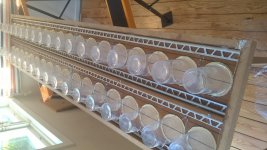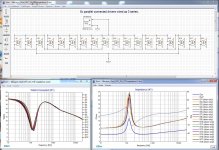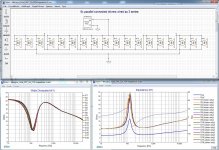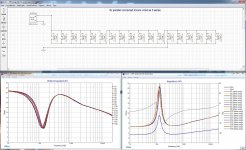Cool project! Keep us posted. I built something similar with the TC9. Looking forward to your impressions.
I wouldn't dare insinuate that! My enclosure did break, that wasn't fun at all 🙁.
While you enjoy your popcorn, and wait for the concrete to set, could yow please see post #7 and have an opinion on the schematic? Thanks!!!
Cool project! Keep us posted. I built something similar with the TC9. Looking forward to your impressions.
I own a pair of 10f/ and it seems that are not miles away from Tc9, I think this driver is not as good - but I hope for a decent and engaging result.
We'll see and let you all know the result - warts and all.
//
While you enjoy your popcorn, and wait for the concrete to set, could yow please see post #7 and have an opinion on the schematic? Thanks!!!
I see 3 Series groups of 6 paralleled drivers, right? With a nice symmetry. Do you have X-sim? Easy to test if it works like this.
Regarding the wiring and some quick math. Nominal 4 ohm driver, 3 in parallel = 1.33 ohms, so 3 in series = 4 ohms. Then 2 of those stacks in parallel = 2 Ohm nominal speaker per side.
Is your amplifier 2 Ohms stable?
Is your amplifier 2 Ohms stable?
Ah, I missed that!I think these are 8 ohm nominal. I expect 3,8 ohm.
FR 10 HM - 8 Ohm | Visaton
//
Did a quick sim in XSim with impedance curves (real curves of each individual driver) of a group of TC9's from Fluid (had them on hand thanks to BYRTT who had done some simulations of parallel/series wiring vs Series/Parallel)
Here's the result:
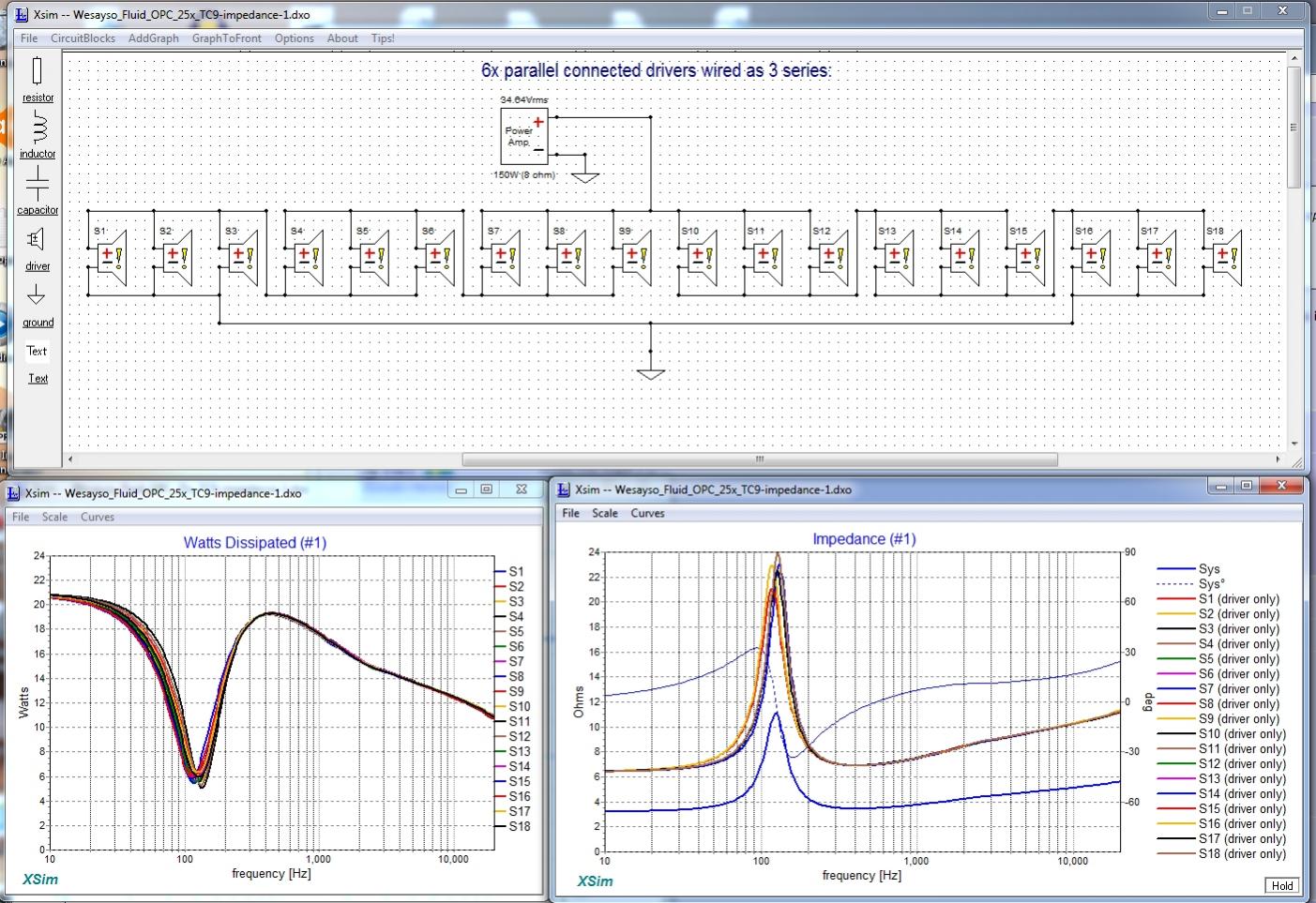
Funny enough, when I connect the ground from driver S9 and S10 it becomes slightly better balanced:
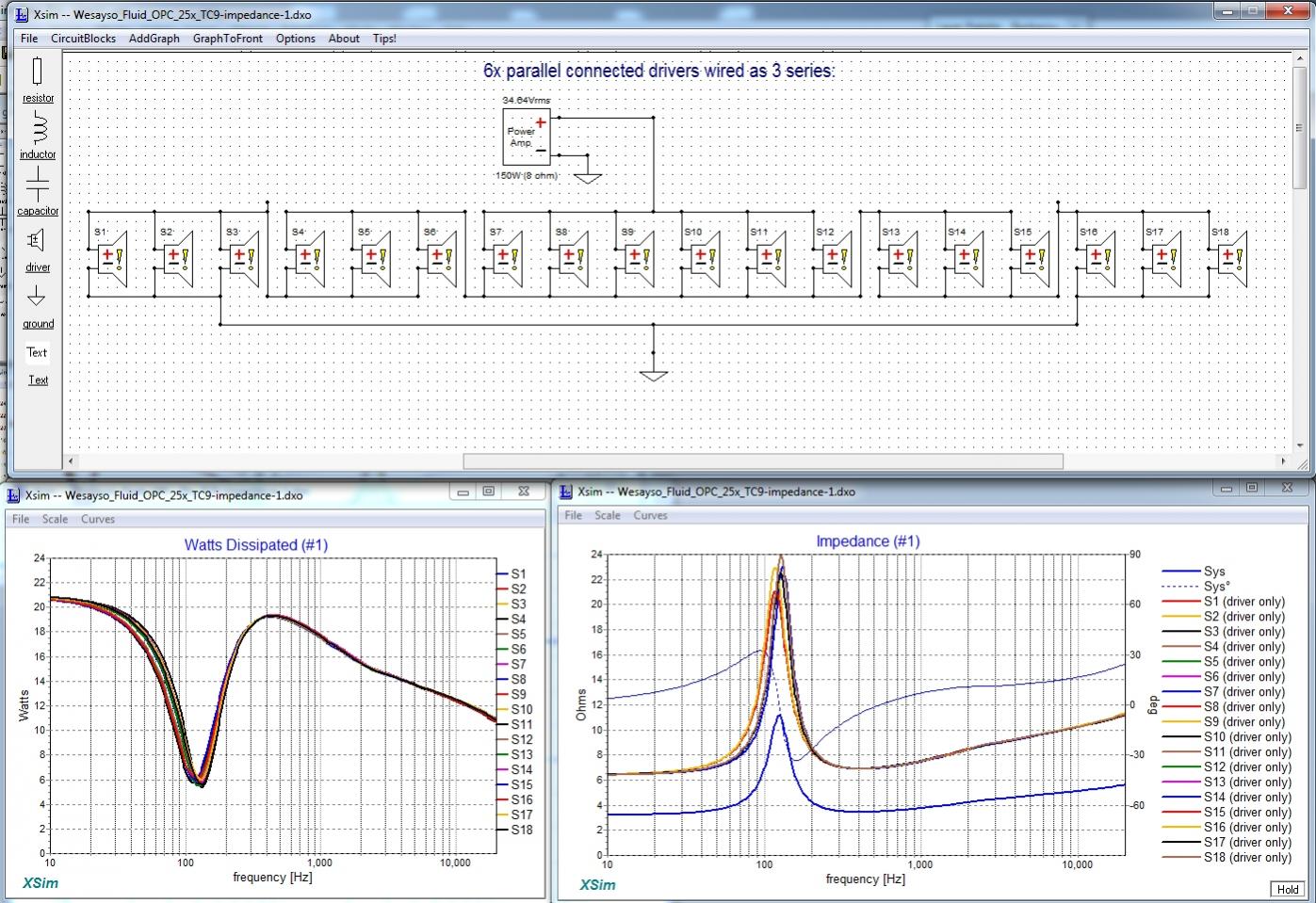
I tried the same on coupling ground on S6 and S13, which only had a minor influence but still a slight change. Might be worth it...
Grouping them together averages out the impedance curves a bit better it seems.
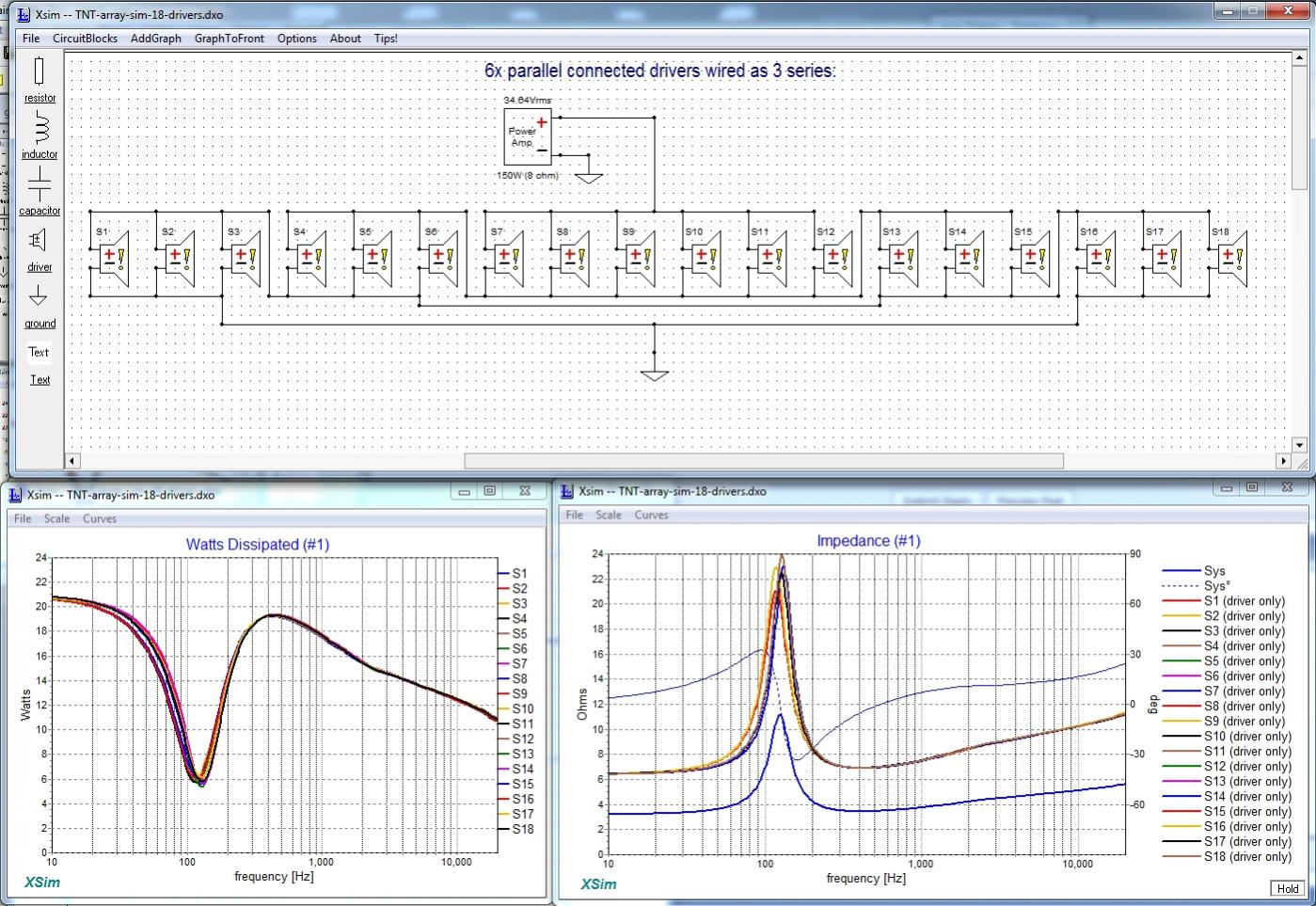
In this example I have put 150 watt on the array, so you can see how much each driver gets. I only upped the power to 150 watt to make the individual driver differences more visible.
I attached the XSim file for you to play with. Not the impedance curves of your actual drivers, but at least a real curve for each individual driver was used. Your schematic works, but I'd opt to add the 2 ground connections I mentioned.
Here's the result:
Funny enough, when I connect the ground from driver S9 and S10 it becomes slightly better balanced:
I tried the same on coupling ground on S6 and S13, which only had a minor influence but still a slight change. Might be worth it...
Grouping them together averages out the impedance curves a bit better it seems.
In this example I have put 150 watt on the array, so you can see how much each driver gets. I only upped the power to 150 watt to make the individual driver differences more visible.
I attached the XSim file for you to play with. Not the impedance curves of your actual drivers, but at least a real curve for each individual driver was used. Your schematic works, but I'd opt to add the 2 ground connections I mentioned.
Attachments
Last edited:
Gold - much appreciated wesayso!
Power dissipated seems most equal in no 3 - no?
I will try x-sim!
//
Power dissipated seems most equal in no 3 - no?
I will try x-sim!
//
Yes, graph 3 looks well behaved. If you add the voltage graph (to see each driver) it becomes even easier to see the differences. Hope you can run XSim, brilliant little program.
In your post with the 3 different cases - are the schematics the same? Trying to see the differences? Hmm... me going nuts?
//
//
Can you click on them to get the full picture?
Case one is your proposed wiring scheme,
Second one has the ground wire from series S7 to S9 connected to S10 - S12
Third is one more ground wire between series S4- S6 and S13 - S15
This tweak makes every driver group of parallel drivers connected as a clear group of 6.
At least that was my idea behind it.
Case one is your proposed wiring scheme,
Second one has the ground wire from series S7 to S9 connected to S10 - S12
Third is one more ground wire between series S4- S6 and S13 - S15
This tweak makes every driver group of parallel drivers connected as a clear group of 6.
At least that was my idea behind it.
- Home
- Loudspeakers
- Full Range
- My FR10HM corner-ceiling-floor-array
